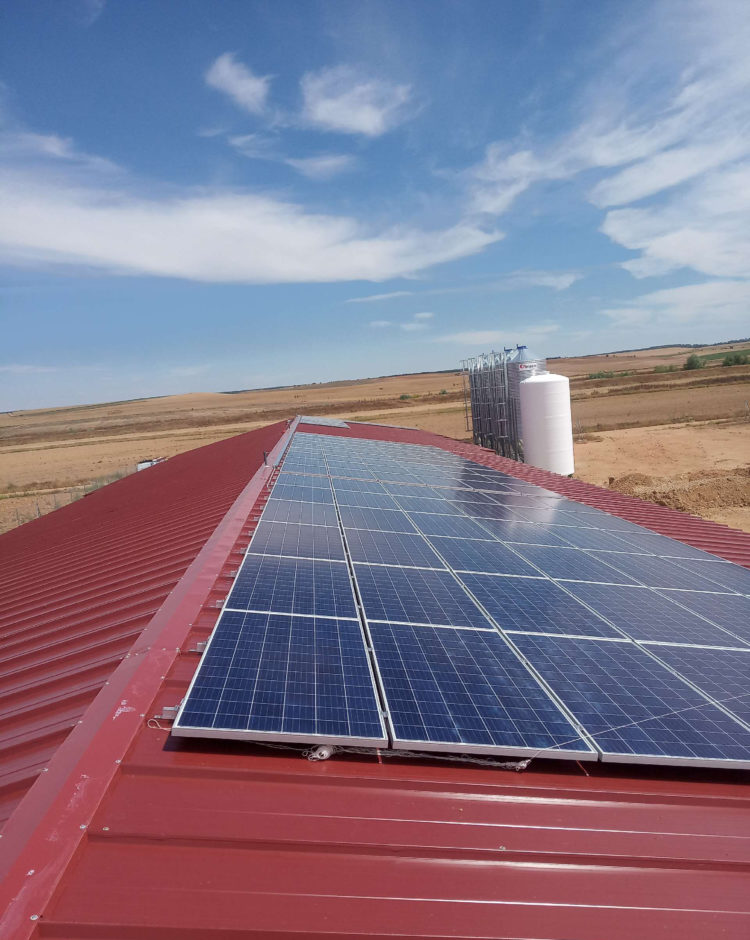
Ventilation and climate control account for most of the electricity consumption in a poultry farm. Constant temperature and excellent air quality are essential for the optimal development of birds, and need to be carefully controlled throughout the year. In a warm climate, like Spain’s, the summer season brings a considerable increase in electricity consumption – particularly at night, so that a reliable electricity supply is an absolute must.
The good news for poultry farmers is that the hot season is also the time when their solar modules will generate most power. The real challenge is designing a system which supplies the farm’s energy needs 24 hours a day – plus contingency. This is the challenge that Cambio Energetico decided to take up for their client JAVEPA S.L. – a modern turkey farmer in Zamora with a 2480m2 unit under a thermal ‘sandwich’ construction roof.
Off-Grid System configuration
- 126 Sharp polycrystalline solar modules offering 41.5kWp
- 2 SmartSolar 250V/100A charge controllers
- 3 Quattro 48/10000/140-100/100 inverters
- 1 Fronius Eco 27.0.3.S inverter
- 21 Pylontech US3000 lithium batteries storing 67kWh
Cambio Energetico, who have been designing and installing off grid systems for more than a decade, chose an AC-coupled system for the JAVEPA project, connecting a Fronius inverter along with the Quattros. The system also relies on Pylontech lithium ion batteries and a genset for backup.
Connecting a Fronius grid-tie inverter to a Victron system is especially interesting when most of the electrical demand occurs during the day. The Fronius inverter powers loads directly improving efficiency to over 90% . When there is surplus PV power available the Fronius inverter does not reduce the power harvest but uses the energy surplus to charge the batteries. On cloudy days the batteries supplement the power output from solar without having to rely on the generator; whilst at night, the batteries will take over full supply (if sufficiently sized for the installation) powering all loads, and only starting the genset – automatically – in case of need.
One of the most interesting advantages that an AC-coupled system like JAVEPA’s provides is that it reduces unnecessary usage of the batteries, thus extending their life (a battery energy storage system is generally the most expensive and ‘consumable’ element in a solar installation).
Another benefit for JAVEPA is that the whole system can be monitored remotely using Victron’s Remote Management portal VRM, so that trouble-shooting and fine-tuning of the installation can be performed without a site-visit by the installer’s technicians.
A more conventional DC-coupled system would be preferred for projects where the industrial activity reaches its peak at time of low solar-energy production. In this case, the best option would be a system which efficiently charges the battery bank.
In both cases, the genset would only have to operate occasionally, thus reducing fossil fuel consumption and equipment maintenance, as well as extending the life of the generator.
Fronius Setup MG 50/60
Connecting a Fronius grid-tie inverter to a Victron off-grid system is made possible by Fronius’s Setup MG 50/60Hz. (MG stands for micro-grid while choosing 50 or 60Hz will depend on the country).
The Setup MG makes it possible for the grid inverter to modulate the power according to the frequency it receives from the Victron inverter which, in turn, will modulate the frequency based on the batteries’ state-of-charge (SOC).
The Setup MG works in a similar way when the genset is providing frequency and voltage. It modulates the power according to voltage, thus avoiding reverse-current when there is more PV power available than required by the loads.
Lithium-ion batteries
Off-grid systems are increasingly opting for lithium-ion batteries rather than lead-acid. Cambio Energetico decided to use Pylontech lithium-ion batteries for JAVEPA for their increased efficiency, greater depth of discharge, optimal scalability. The battery’s ability to report any malfunction is another compelling reason. Victron systems are compatible with a number of third party manufactured lithium-ion batteries, including Pylontech.
Cambio Energetico have produced a video of their installation:






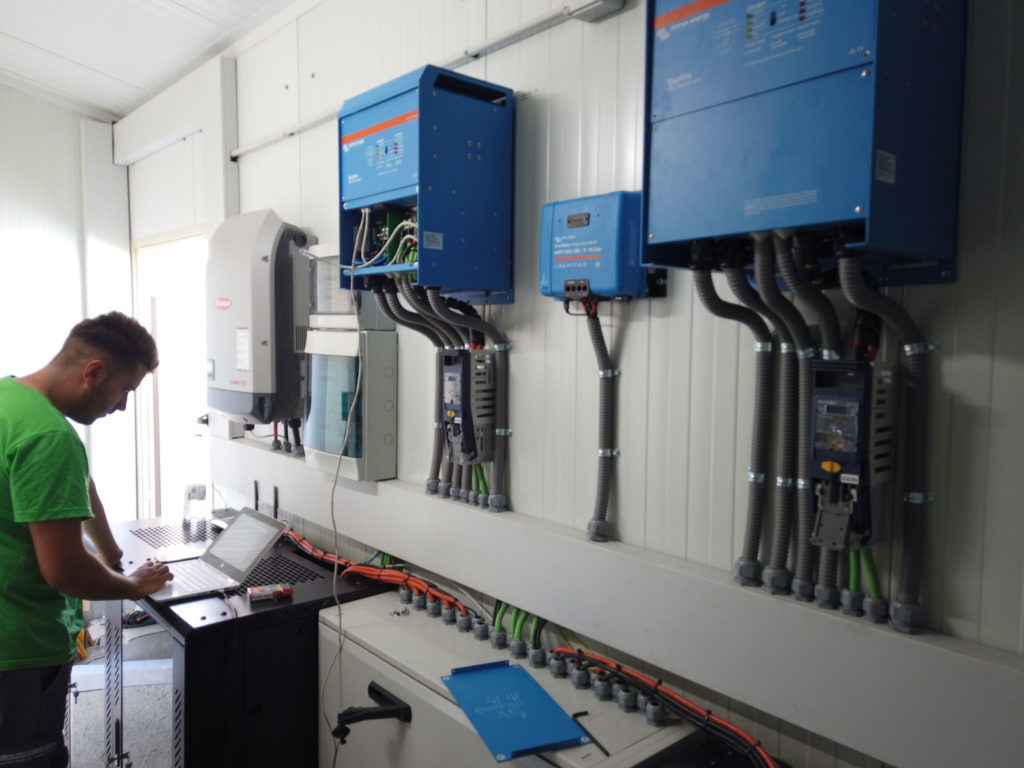

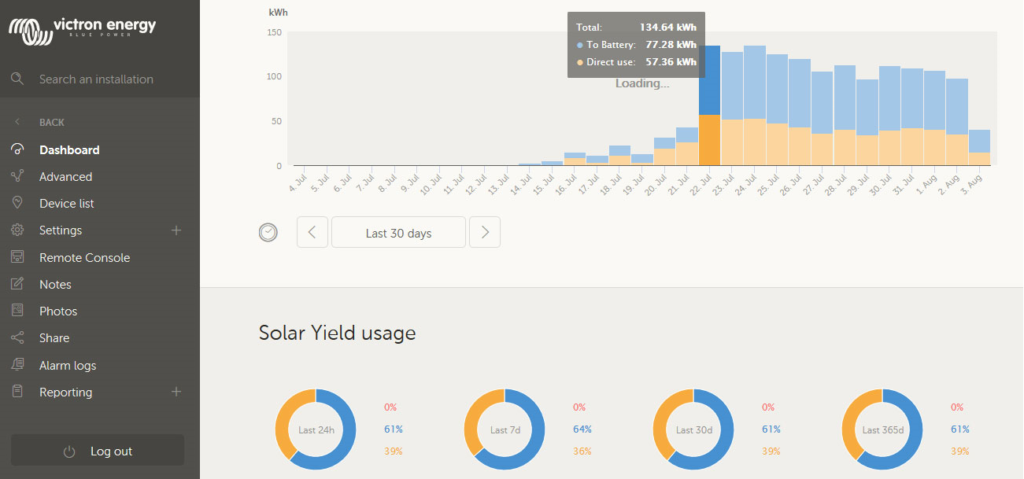
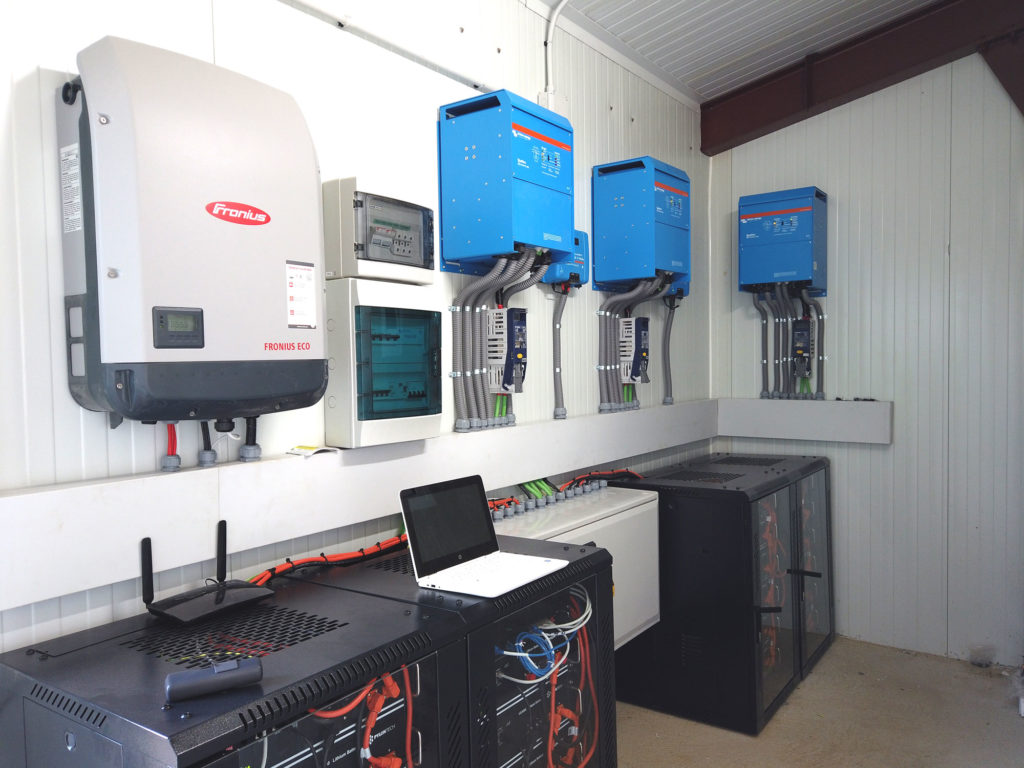


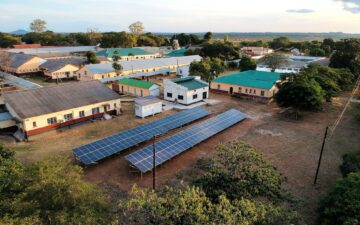









 #victronenergy #adventure
#victronenergy #adventure
 ELECTRICS
ELECTRICS 
